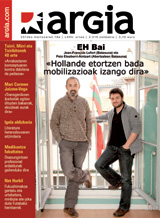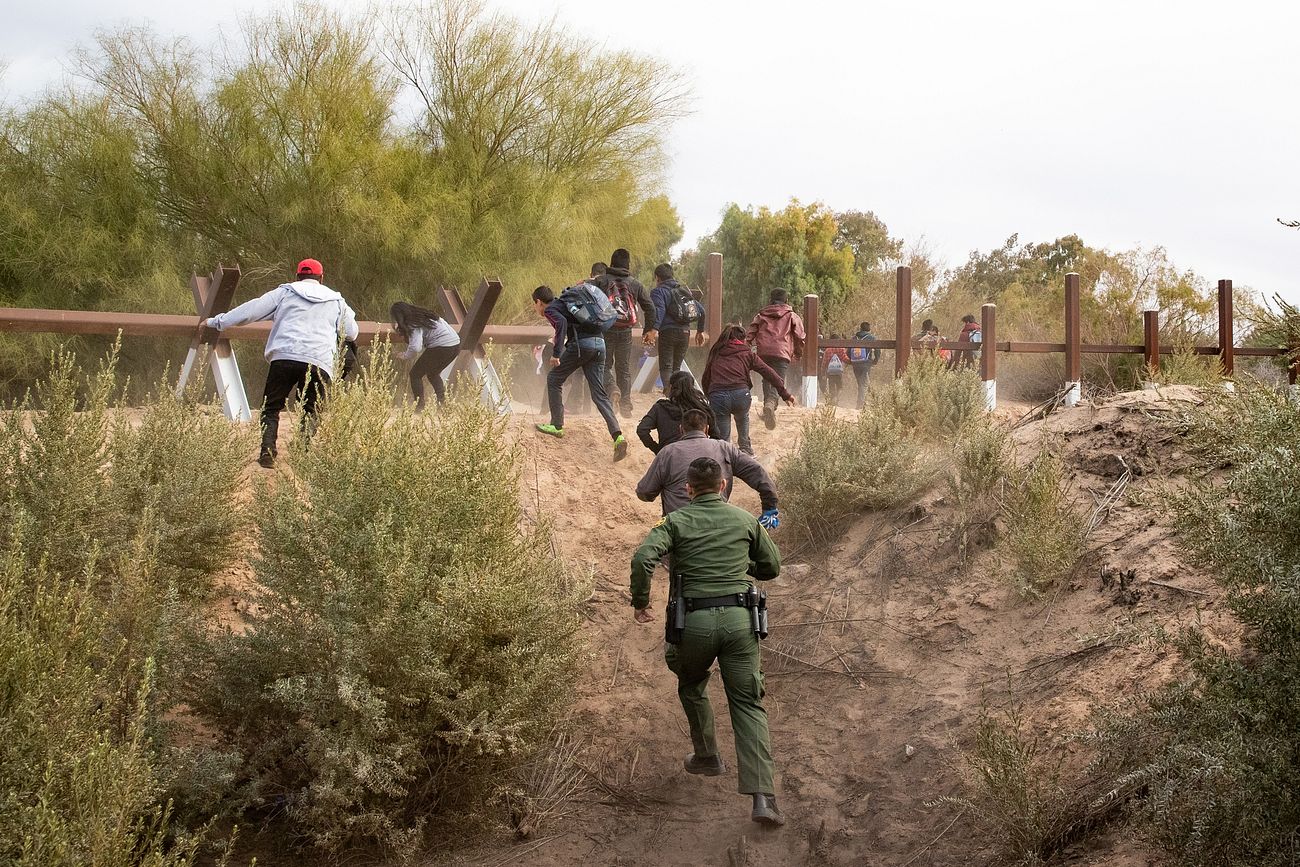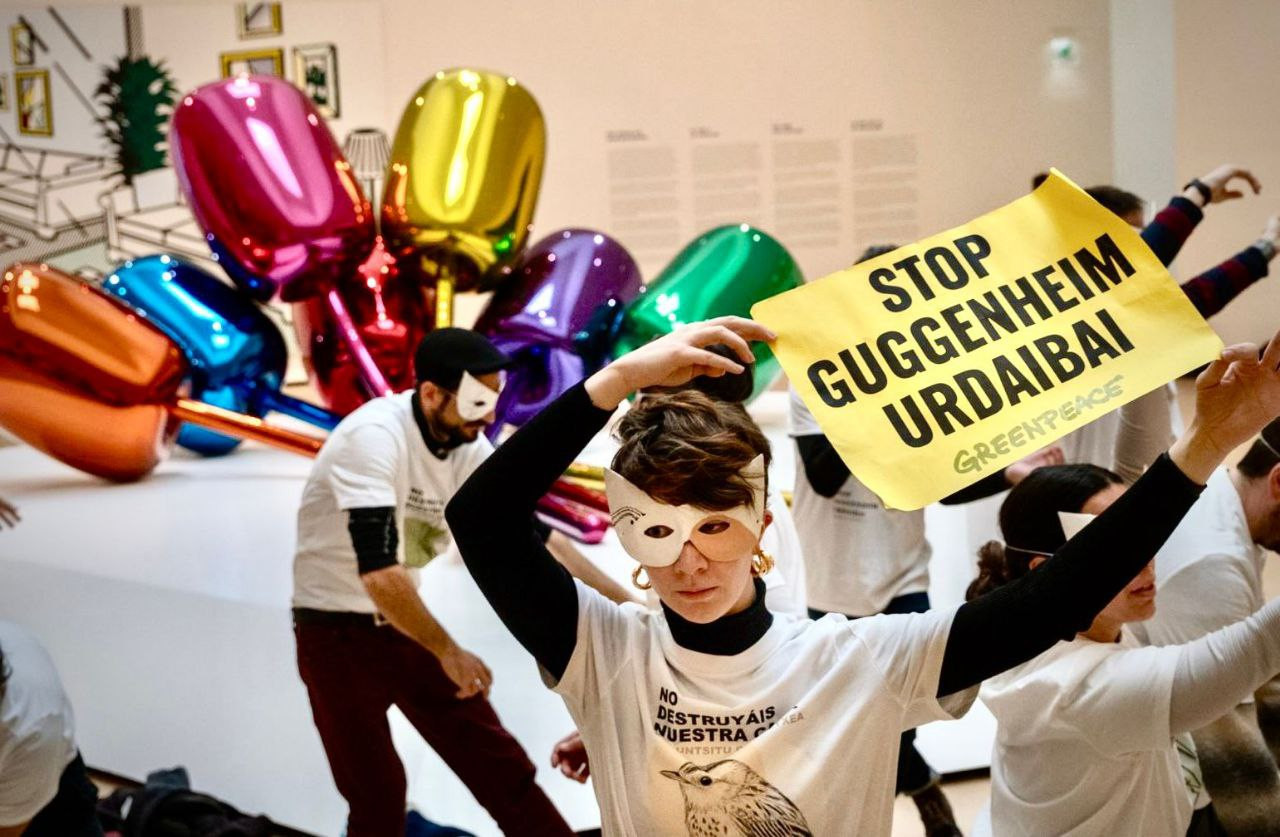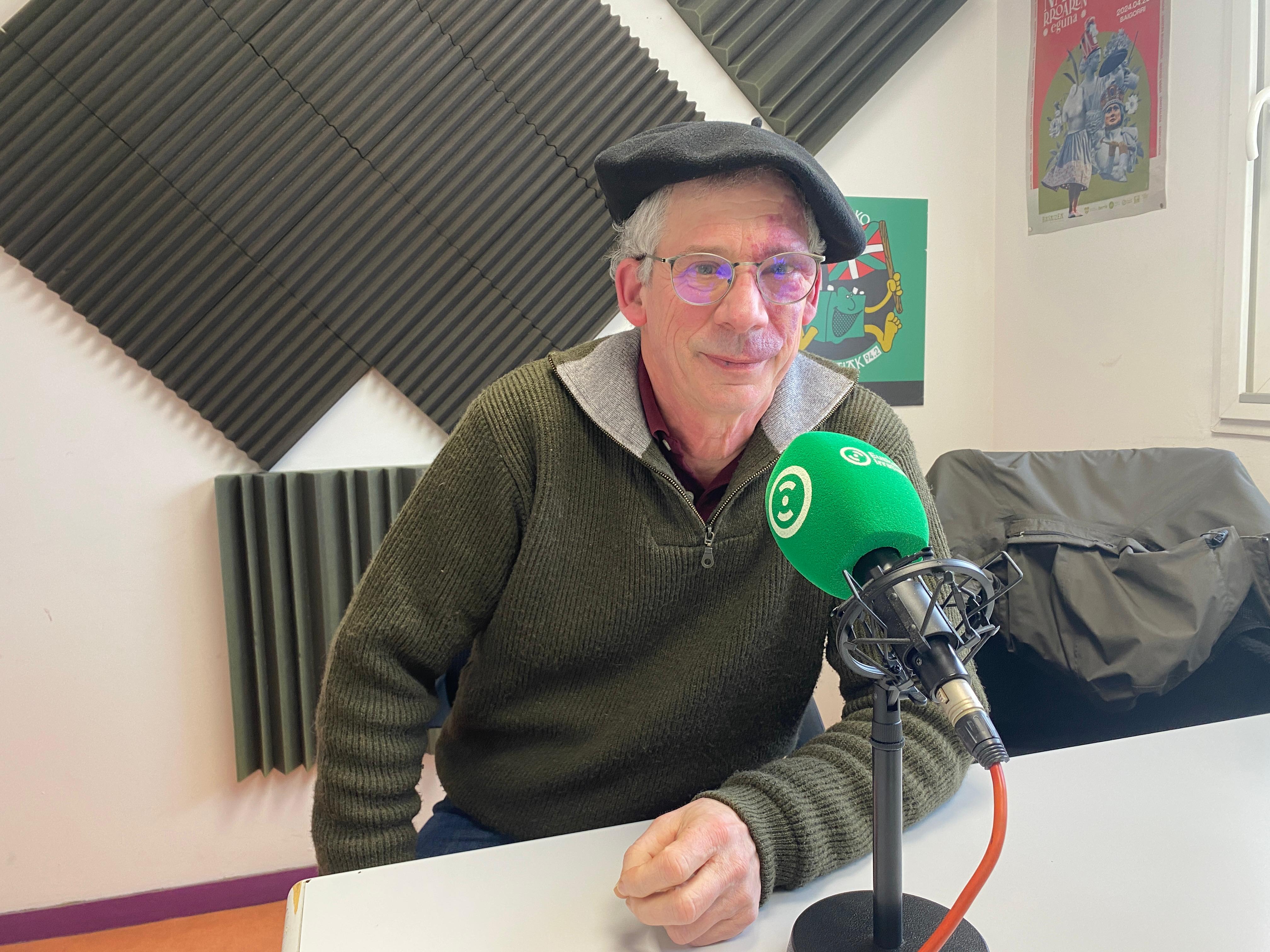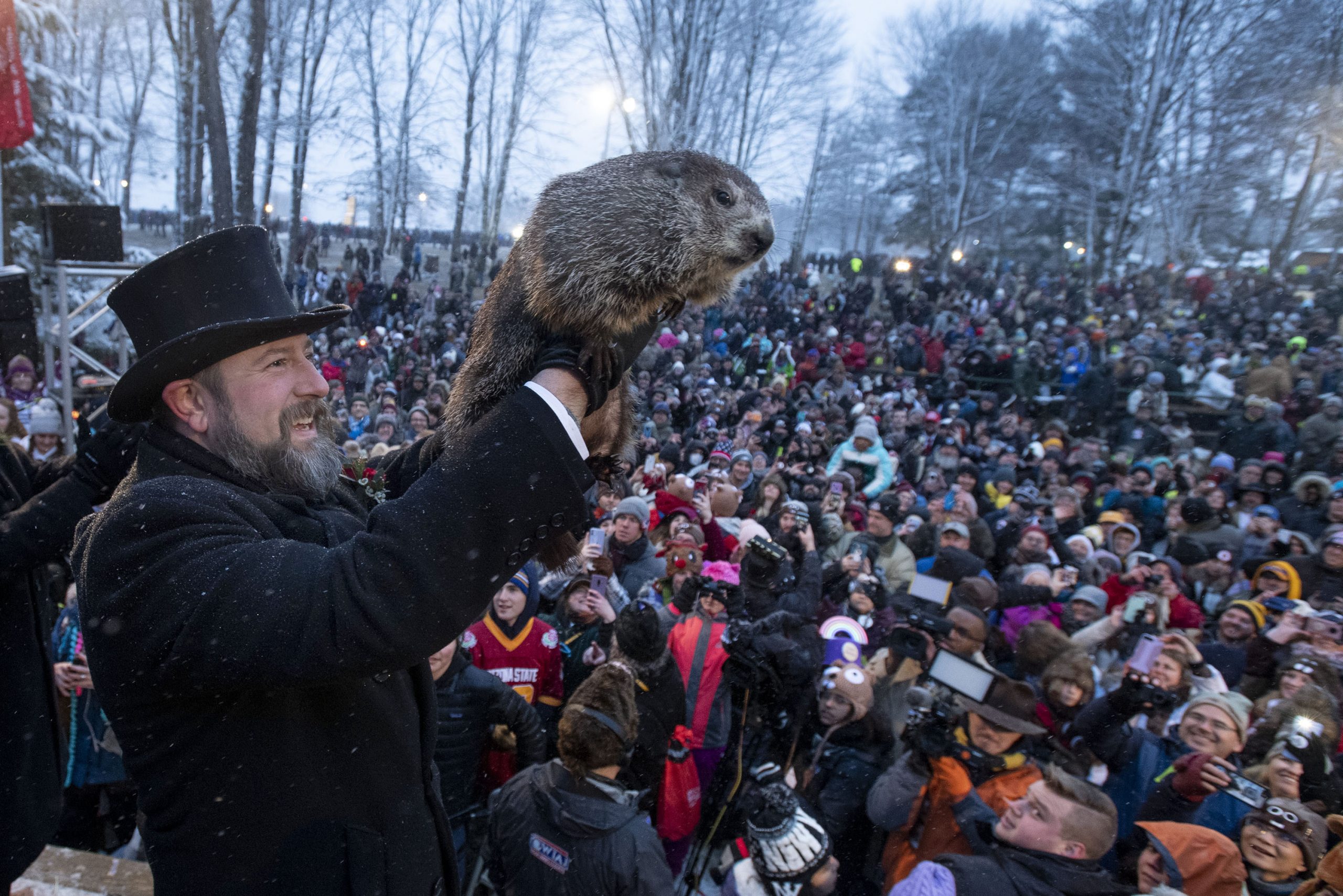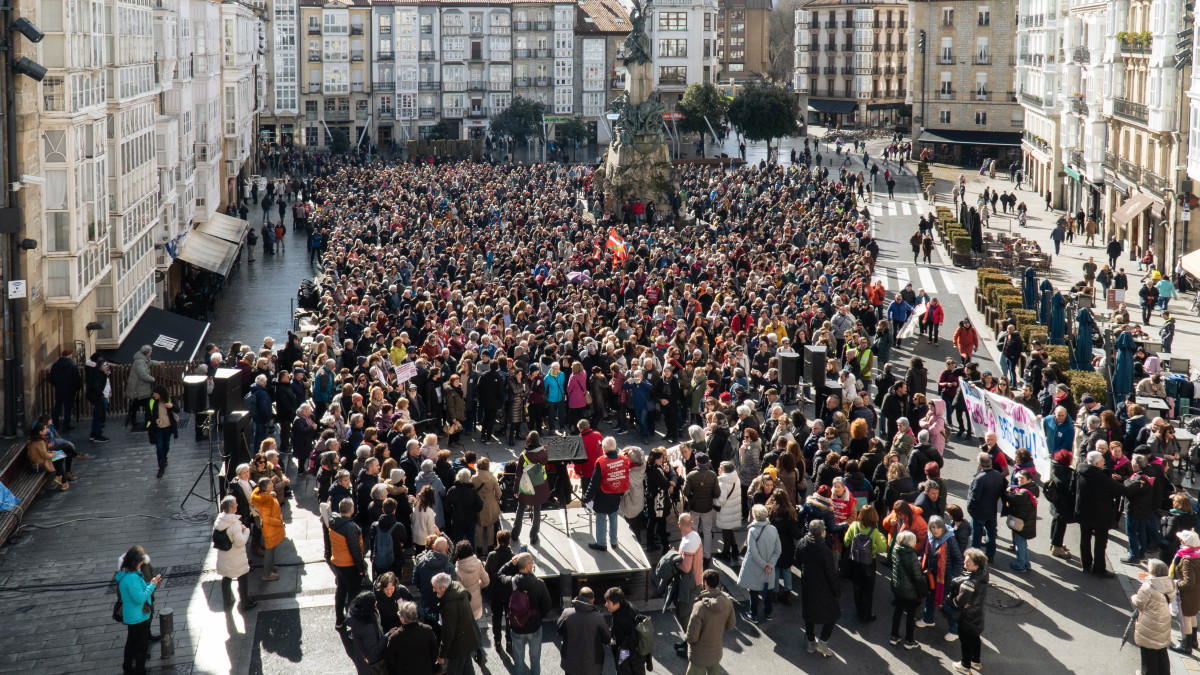"Don't think that in 40 years we'd be doing the clown."
- Clown. Definition. An inexhaustible source of humor for the rest of the members. The definition would like to capture an impenetrable reality. 40 years of activity cannot be included in the definition.
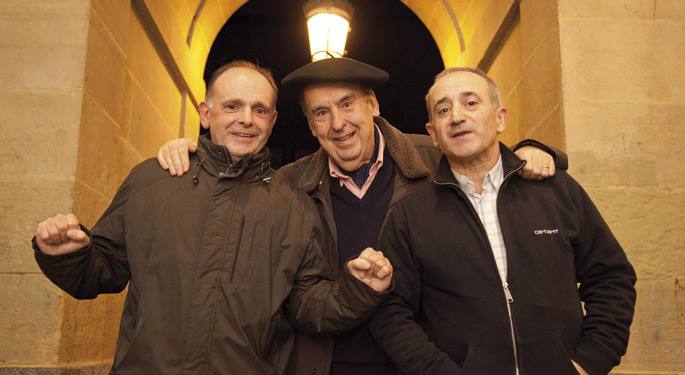
You started the clown in 1972.
We don't have to complain. We had guessed it. It was a time of great movement. The best time of Ez Dok Amairu, the Puppet Group, the theater, the cinema… The Basque Man batua in the red alive… In addition, the people who had lost the war, which was completely destroyed, and the young people, who broke it with the previous generation. In that we were pretty thankful, they were great names of our culture, but they were marginalized. A Nemesio Etxaniz! Our relationship with him. There was a sad ending. Manuel Lekuona eta! It is a pity that people who have deserved so much are marginalised in this way. It is, of course, today. So things looked different.
Kresala Association.
We were and are Kresala's partners. And, to some extent, also founder, as we are one of the first partners in the partnership. The Basque culture was boiling, and Kresala was present, there he took several ideas, and other activities. If it weren't Kresala, maybe we wouldn't have arrived either. Who knows? The saltpeter gathered us to work; cultural weeks called Haerrikada and. We take the name of that Axular phrase: “The stone that circulates is not bound by mosses.” The weeks of culture used to be fortnightly and three weeks. Tremendous accidents happened. [Lluís Maria] We also brought the famous priest Xirinachs. With the police, there's always mess. The association was not political in itself, but they gave us a lot of firewood. We were young, we worried, we engaged… But we were independent, we had nothing to do with the political parties. We were not politicians, but we were not apoliticians!
Paco Etxebeste.
He was about to be ordained a priest. He was also a member of Kresala and a saltsero. And friends of friends. In the heart of Kresala, we wanted to do some children's event, as there was neither in Basque nor in Spanish. We came up with what to do and what to invent the clowns. Apparently, the clown was made at the Pako Etxebeste seminar and we asked for help. And he brought us scripts, he left us some to dress us… Pako was a pure, terrible artist. When one of us was sick, we had no more to call him. It made the clown wonderful. In those days we were Kixki, Mixki and Kaxkamelon, and Pako was going to do one and the other without any difficulty.
Scripts.
We had some sketches that Pako Etxebeste had given us. Others, by Tito and Canuto, were Txema Zubia and Jaime Zurbano. As they were in Spanish, we translated them and adapted them in our own way. And we still do some of them. We have the most classic sketches. Of course, we were also doing it about ourselves: jokes, etc. And yet, 50 percent was improvised. That's why he was mute in Kaxkamelo, that's why he's mute in Txiribito: easier to improvise two than to improvise three people.
You started from one town to another.
The cultural week of Kresala was normally held in March. We take care of children's activity. And we made clowns, a small theater play, chocolated -- full children's party. The children's party had a large influx of people. Among those who saw that first session, there was a marriage from the ikastola of Aiete. We were asked to do the same session in Kresala at the ikastola de Aiete. We're ready. We told them we would do everything we didn't do the chocolate food. The next session was held in tribute to Joxemiel Barandiaran in Ataun. Pako Etxebeste came to us, telling us to offer us for the session. Barandiaran himself also had the ability to clown. When they were at the seminary in Vitoria, on Sundays in the afternoon, they would put the silent movies and he would give them a voice, they would do the effects… It was very good, people would laugh. A large number of people from seven Basque municipalities met in Ataun. Among them, those who have left Ondarroa. Let's see if that same year we could make a program at the village festivities. We do. And we left. We did the theater and the clowning function. There we met Manolo and Enkarni Genua in the puppet. The study was complete. Until then, in the Basque and similar parties the days were organized for boys, but in them everything was “Txistularis boys”, “dancing boys and girls”… They were performances of boys and girls, for parents and not for boys. After doing so in Ondarroa, Xabier Gereño listened to us to make the program in the Santiago Apostle theater. Singers, dancers and us. There we got the poster in Basque and Spanish for the first time: “For the first time in Bilbao, clowns in Euskera,” and our drawing made by someone in a photograph. So we started from one side to the other and we don't know if it's not a cover, our cover, in Zeruko Argia magazine. That's where a lot of people would have met us. We, among us, believed that someone would see us and they would also become clowns. We didn't see ourselves as clowns. From 1972 to 1985, we made over three hundred representations here and there. About thirty sessions a year. There was no theater company capable of doing so many numbers. The puppet group, and we, Kixki, Mixki and Kaxkamelon, were on the street.
You had to take out your clown permit.
Agustin Zapiain ‘Pello Kirten’ told us it was right. He also went from one town to another and had taken permission, in the vertical union. In addition, Miguel Miralles, founder of the fanfare Los Pomposhos, was on the authorization jury. The police stopped us in the controls, they came to control our actions at any time. When Carrero Blanco was killed, we had a session in Bergara. Back in sight, on the Discharge, the control of the Civil Guard. They stopped us, they opened the trunk of the turtles, we saw a toy carabine… “And this?”, “we came from doing the clown function”, “do you think we have a day to do the clown today? Last time!” In Bizkaia, on the other hand, they asked us for permission and a script. Xabier Gereño helped us in this: we prepared a little scripts, Xabier gave him a certain appearance, presented himself in Basque and Spanish in the civil government, asked him and gave him his approval with a stamp. So when they had been asking us what we had to do in the program here or there, we had those scripts accepted, although we didn't know a single word about what we were going to do in the program. As we also had the vertical union card, with bow and arrows, we were free before the police. We had a passport and a visa.
In 1983 he joined the Txema Vitoria group.
At times when Kaxkamelon was unable to attend the program lately, we called him Txema for the delegation. Txema and Piter also collaborated in the Larramendi College of San Sebastian. We had a lot of doubts, how to have Txema mudo! At that time, we had the proposal to do a program at Don Don Kikiliko, and we started. With what Kaxkamelon's work was doing, we had ups and downs and we offered it to Txema. He accepted it.
When you started doing the function, adult session, did you change the mood key?
More than the key humor, the theme changes – everyday life gains strength – and the characters are also different. We went from clown to showman. It's always about making humor, but it's linked to what seemed like the day.
How do you make humor?
It's not done, it's created. Ask Charles Chaplin. Anyway, we've never been very theoretical. We, we have acted, we have militated, we have done… The road has taught us. Every Monday, we would meet around a table and start saying nonsense, laughing and taking notes to make the most fun anecdotes. It was Braim storming. We started with television in Txirri, Mirri and Txiribiton. At first we took care of everything: scripts, direction... But we saw that we couldn't go on like this, and we started looking for help. From the second year of Don Don Don Kikiliki, as in the Function itself, we were not alone, we had writers to do the weekly session. The first one, Andoni Egaña. There is something! Karlos Zabala and Eneko Olasagasti will then be responsible for the live broadcast of Eitb.com. They are too! We needed someone to help us in writing, and we chose Jaime Otamendi, another, who has made a great journey… They were very young, they were in full shape, and we know nothing about them, but they to us, a lot! Good people in function, also in music: Jose Mari Oiartzabal, Jose Antonio Mercero, Karlos Giménez, Joserra Senperena, Mikel Artieda, Paco Díaz, Mixel Ducau... That helps a lot.
It is television itself that helps others to become known. Especially in ETB at that time.
We got a lot more fame in the two or three months we started on television, than in the 13 years before. At that time of duty, we were seen as on average about 200,000 people. Today, in Euskal Herria there is no program that brings together as many people as usual. Then there were four television channels, which was not happening now. In addition, the function was in prime time, for example. And the clowning programs on Saturdays in the afternoon.
You had to combine your clown work with your work.
It's inevitable. Txiribiton, for example, was a professor. In addition, he was in charge of studies. I spent the morning at school working non-stop, forgetting the clowns. In the afternoon, without thinking of anything other than the teacher, he suddenly passed through the clown. It was an excellent gymnastics for the mind. Combining clown work and trade, on the other hand, is linked to our origins. We had never thought of being a clowns. Then came, yes, a generation of great merits that wanted to be actors: Karlos Zabala, Eneko Olasagasti, Elena Irureta, Jose Ramon Soroiz, Aizpea Goenaga, Mikel Garmendia, Kontxu Odriozola… All of them stepped from our hands for the first time the television set. We were older, we came from before, and we didn't even think about being professional, living dedicated to it. It didn't occur to us that we were going to be doing the clown in 40 years, nor did it occur to us! At Kresala, we held the first session saying, “Let’s do!” and we followed that path.
How do you do good work?
We know what the child looks like. The concentration has a hard time keeping it long. The child cannot be held for one hour. It must be given the opportunity to explode from time to time. Then comes the calm. We are not didactic, we do not want to be, but it is a good act, it is didactic by itself. And on the other hand, even if it is of a didactic nature, the program can be bad. Our challenge has always been to get the attention of the public. Today we see many groups in an impressive volume, children on the right and left, fathers and mothers chatting… We need silence, cutting silence, empathy between children and us… We want to have the child looking at the tip of our finger. When we manage to bring the public from the deepest laughter to the deepest tenderness, “today yes, communication!” there is the applause! The girl's applause is brief and, after applause, she wants more to applaud again. That's the success, the applause of the child. For years in Vitoria-Gasteiz we had two functions, in the morning and in the afternoon, in the pavilion of Mendizorrotza. We collected about 8,000 children in total. And they all fell silent, exhausted! That's what's worth.
It's over, it's over. “To be annoyed!”
We had a performance in Vitoria. Festival organized by Euskadi Irratia. Two days earlier they realized that they didn't make propaganda. They have started to advertise on all radio stations, both in Basque and in Spanish. On the day of function, with Mendizorrotza about to fill, 3,000 people. We started in Basque, as always. And there, a barabbas, an old man, with a cap on his head. “In Spanish, we can’t!” he screamed. Mirri replied: “To be annoyed!” It caused a big laugh, and again, Mirri uses it frequently.
Sagarra mantzana / ikatza carbon / mujer andria / ta hombre gizon. / Xanti, xanti, xanti, / txibiri-txibiritero, / xanti, xanti, xanti, / txibiri-txibiriton, / Kixki ta Mixki ta / Kaxkamelon. Edo Txirri (Xabier Otaegi), Mirri (Jose Ignazio Ansorena) eta Txiribiton (Txema Vitoria). 40 urtez irri eginarazle zazpi euskal herrietan. Jolasean hasi ziren, bizi osoko ibilbidea egin dute euskaraz eta barrez. Don don kikilikon, Funtzioa, Barrebusa, Altzaporru, Trikitraka Trikitron, Sagarra da apple… Ehunka kantu gure belarrietan, Euskal Herriaren historiaren atal bat hiru pailazoen ibili ederrean.
“Gogoan dugu, lehenengo emanaldiak ordubete inguru iraungo zuen. Haren ondokoek, gidoi bera izanagatik ere, ordu eta erdi. Ireki egiten genuen gidoia, harrotu egiten zen saioa, bizkotxoa labean bezala. Bestalde, hor zen musika, hor ziren kantuak, eta garrantzi handia eman diogu horri. Ahalik eta lanik onena egiten saiatu gara. Horra Kixki, Mixki eta Kaxkamelonen lehen disko hura. Maitasun handia diogu. Hantxe diren Pintto, Pintto, Paristik natorren eta beste mordoxka zabaltzen lagundu genuen. Progresio bat izan da: kasik ustekabean ekindako bide bati jarraipen eman diogu, honaino iritsi arte”.
“Zirkukoa da pailazo tradizionala. Han esketxa egiten du pailazoak, oso landua. Zortzi egunean, bizpahiru emanaldi egiten ditu, eta esketx berbera egingo du. Hitzak ere bakan ibiliko ditu, batean malabarismoa, bestean bestelakoa. Guk bestela egin dugu: gurea antzerkiari lotuago ageri da, euskarari estu lotua. Euskaraz hitz egin nahi genuen, euskaraz hitz eginarazi, espresiobidea landu, esamoldeak aberastu… Era horretako pailazoak izan gara, ez ginelako gauza esketx bat bera perfektu egiteko. Alegia, kalamidade hutsak garelako!”.
Nor gogoratzen da Kixki, Mixki eta Kaxkamelon pailazoez?
Jende asko, gure amak eta, batez ere, gu geu.
Nork ezagutzen ditu Jose Ignazio Ansorena, Xabier Otaegi eta Txema Vitoria?
Etxekoek, emazteek, koadrilakoek.
Zer duzue pailazo izatea?
Matxino izatea, arrakastaren kontzeptuaren kontra dabilena.
Non da pailazoaren tristura?
Pailazoaren bihotzean. Osagarri beharrezkoa du hori pailazoak.
Non da euskararen tristura?
Euskara erabiltzearren hasi ginen, euskara batuaren alde egin genuen, euskara esanguratsua, hika ere bai. Bide horretan jarraitu dugu.
Nahitaezkoa da gaztelania euskarazko pailazokerian? Ez, baliabide bat da, ez besterik. Gure erdarakadak ez dira dozena erdi baino gehiago.
Zertan aldatu dira haurrak joan deneko 40 urte honetan?
Orduan belaunean urratua, mukiak zintzilik zituzten. Orain askoz ere moñoñoago dira.
Haurrak beti haur?
Bai, baina orain lehen baino askoz lehenago uzten diote haur izateari. 13 urtekoak ere gure emanaldira biltzen ziren orduan.
Zertan aldatu zarete zuok, pailazook?
Zahartu egin gara! Gaztetasuna falta zaigu, freskotasuna. Aldiz, esperientzia izugarria dugu.
Beldur eszenikoa.
Aspaldi galdu genuen. Hasieran ere lotsagabe xamarrak ginen, eta orain berriz, batere beldurrik ez digu ematen agertokiak. Ofizioa.
Pailazoak, gure pailazoak.
Pailazo asko dabil batean eta bestean, baina batzuk animatzaile baino ez dira.
Txiribitonek hitz egingo balu…
Inguruko guztiak isilaraziko lituzke, ez luke etenik. Isilik hobeto dago.
40 urte!
Iritsi gara! Kresalan hasi ginen, eta Kresalan bertan ospatuko dugu martxoaren 25ean. Ondoren, hiribururik hiriburu ibiliko gara.
“Bi une dira berezi. Bata, sarrerakoan, haurraren orroa jasotzen dugunean, eta orroan, txaloa. ‘Txirri, Mirri eta Txiribiton!’, aurkezpena egin, agertokian azaldu, eta haurraren txalo zaparrada eta miresmena zoragarria da. Bestea, berriz, isiltasun osoko unea. Antzerkia egiten dugu guk, oroz gain, eta antzokian jarduten dugu, non kontzentrazioa eta isiltasuna errazagoak diren, aretoen ezaugarriengatik. Baina kiroldegietan ere egin izan ditugu saioak, eszenatokia muntatuta. Eta han ere haurra isil-isilik ikustea, ahoa zabal-zabalik, begiak borobil-borobil… gozamen hutsa da”.
Duela hemeretzi urte berpiztu zen libertimenduen usadioa Donibane Garazin. Antton Lukuk abiatu zuen mugimendu hori, eta bi hamarkadetan, Ipar Euskal Herriko herri desberdinetara ez ezik, Hegoaldera ere hedatu da.









